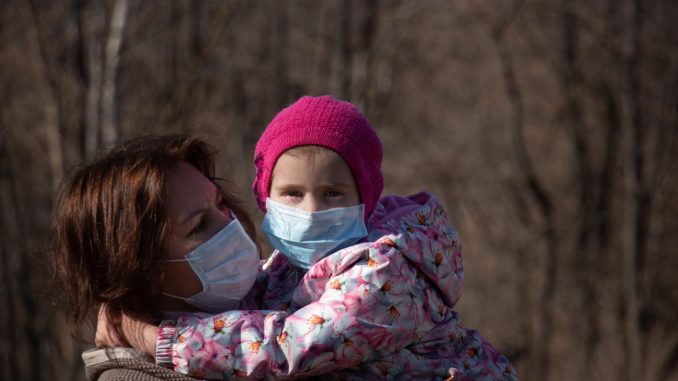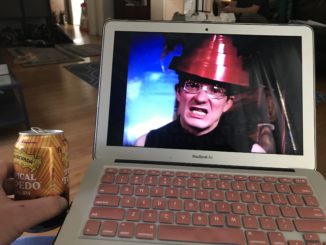
At her pediatric office in Oroville, Dr. Maria Alice Alino meets little resistance when discussing measures to prevent coronavirus. Parents, teens and children get into that mindset when they walk in, because she enforces a policy of wearing face coverings. In fact, staff at the medical facility, operated by Oroville Hospital, hands out masks to visitors who don’t have one and check temperatures to screen for the illness.
That’s just what she observes directly—“I don’t know whether they practice wearing masks on the outside setting,” she told the CN&R by phone.
What families do beyond the health care arena, in their homes but most importantly in public, represents a significant concern for Alino and her fellow pediatricians.
The strain of coronavirus that’s gripping the globe, COVID-19, predominantly strikes adults. Contrary to early reports, children and adolescents can contract the disease—and though patients under 18 represent only 2 percent of all cases (nearly 6 percent in California), with milder symptoms and few deaths, youth risk a rebound effect that can prove fatal.
This condition is called multisystem inflammatory syndrome in children, or MIS-C. Compared by medical researchers to Kawasaki disease, a rare inflammation of blood vessels—but, to Alino, it’s closer to toxic shock syndrome, a complication from infections—MIS-C constitutes a new reaction to the immune system’s response to coronavirus. Organs including the skin and eyes may become inflamed. Doctors and scientists do not know the cause or if it also occurs in adults.
MIS-C is rare, with more than 250cases reported in the U.S. It’s also recent: British physicians put out the word April 26 after noticing an upward trend of previously healthy children presenting Kawasaki-like symptoms. The doctors found a connection to coronavirus, with these children becoming ill even if they only were exposed to COVID-19 yet had not contracted the disease.
“That is the scary thing,” Alino said, “because this is a kid that’s walking around, asymtomatic, and suddenly—boom!—they’re very sick.”
Additionally, while physicians have viewed infants under a year old with underlying medical conditions as highest risk kids during the pandemic, “this multisystem [inflammatory syndrome] is affecting a different age population in children,” she added, “affecting the bigger ones, 8 years old and above—and they are the healthy ones. That’s probably why they didn’t see the COVID-19 illness when they got infected.”
Alino read about the condition early last month in medical journals. Dr. Elisa Brown, a Chico pediatrician, heard about it through one of the few early reports on national news. Neither has seen it locally. As of Friday, six Butte County youths under 18 had tested positive for coronavirus.
A physician in private practice who chairs the Pediatrics Department at Enloe Medical Center, Brown said MIS-C poses challenges to diagnosis. The condition—like the disease that triggers it, coronavirus—has wide-ranging symptoms that suggest other ailments as well. MIS-C may produce a fever, abdominal pain, vomiting, diarrhea, neck pain, a rash, bloodshot eyes, swelling and/or fatigue. Coronavirus manifests with cold-like symptoms, sometimes with nausea and vomiting.
“It can be difficult if a patient has mild symptoms and parents aren’t inclined to get a nasopharyngeal swab [coronavirus test on their child],” Brown said via Skype. “There could be mild viral cases out there that we’re not finding. They could [progress to MIS-C], but it’s a pretty small percentage of patients that are coming down with that.
“It can be very serious,” she added, while stressing that “there’s no need to panic. I want to make it clear that these symptoms are not subtle. So if your child has a mild rash and everything else is perfectly fine, there’s no need to panic.”
Prevention ‘fatigue’
The best way to avoid adverse affects from coronavirus, such as MIS-C, is to avoid the disease.
Through early May, Butte County had led the nation in successfully preventing the spread, doing so well that Butte County Public Health received permission to shutter the auxiliary surge facility at the Enloe Rehabilitation Center. Local residents appeared to take measures such as wearing face coverings and social distancing seriously while adhering to Gov. Gavin Newsom’s stay-at-home orders.
“I have yet to see a parent refuse to wear a mask, or question me about wearing a mask, or argue with me about a conspiracy theory about wearing masks,” Alino said. “I think the attitude of the parents has been good, and they have been more welcoming to do all the precautions that we have been telling them about.”
Those precautions also include washing hands frequently, with soap, for at least 20 seconds.
However, since May 12, when the governor loosened restrictions on Butte County businesses, the number of cases has increased dramatically. As of Friday (June 5), the county had 65 cases—up from 18 before reopening—and the first fatality.
The increased risks of exposure from reopening, along with changing attitudes among teens and adults chafing at confinement, concern the physicians.
“I think that there’s going to be a certain amount of mask fatigue, social distancing fatigue,” Brown said. “For example, the protests that we’ve seen across the country regarding the recent police brutality issue, that’s been very varied—you watch on TV, some of the people are wearing masks and an awful lot of them aren’t—and I’m really afraid that’s going to cause a surge in cases.
“I was happy to see [in] our local protests, what I saw on TV anyway, it looked like most of the people were masked and were trying to practice some social distancing.”
Neither Brown nor Alino suggested draconian measures. It’s OK this summer to take children out, to the park and to the pool. They advised to continue following oft-repeated public health guidelines: face covering, distancing, hand washing and sanitizing.
“We’re not going to have a handle on [coronavirus] until we have an effective and safe vaccine that’s accepted by a majority of the population,” Brown said. “I think we can reopen and get back to a somewhat more normal lifestyle, but we have to be more careful about it…. Personally, I have decided I’m going to favor businesses that practice social distancing, masking, and encourage/require customers to do the same.”
Added Alino: “I think everybody has to be vigilant. Remember before when the young ones thought they were immune from coronavirus? I think we have to be vigilant that it actually affects kids … and when it affects them [via MIS-C], when they get it bad, they get it bad, so fast.”




Be the first to comment